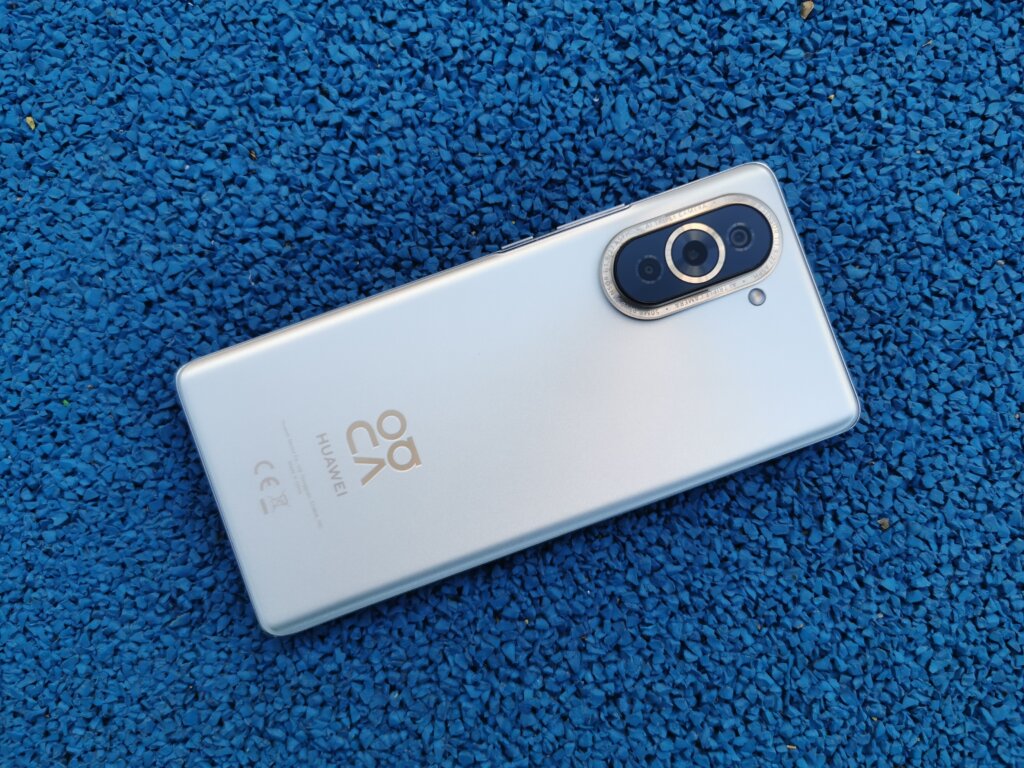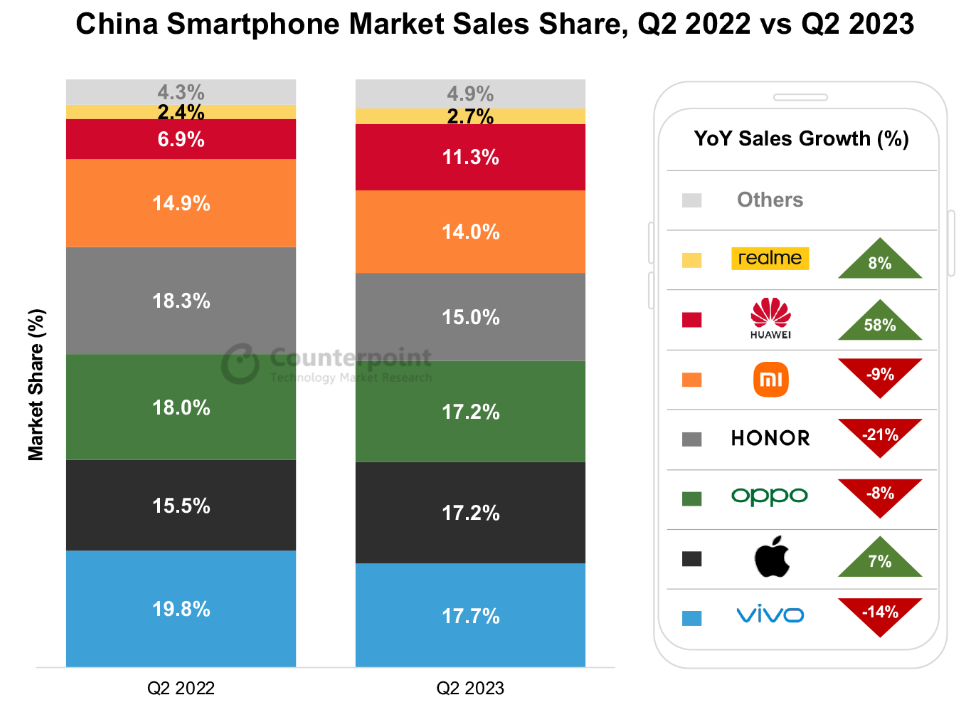
Huawei denies planning 5G phones release. (Source – Shutterstock)
Despite rumors, Huawei never planned for the release of 5G phones
|
Getting your Trinity Audio player ready... |
- Despite rumors, Huawei denies planning 5G phone releases, citing US sanctions.
- Huawei shows Q2 growth in China amid speculation of a potential return to the 5G market.
In the realm of technology, gossip travels quickly, particularly when it involves industry giants like Huawei. Numerous sources have implied that Huawei plans to unveil 5G smartphones, fueling chatter about a major 5G phone launch after October. Despite this, He Gang, Chief Operating Officer of the Consumer Business Group, has firmly denied these claims. These speculations sprouted from a Tencent Deep Web article that hinted at a major October announcement by He Gang during a video conference with Huawei retailers, potentially about 5G phones. Nevertheless, He Gang has categorically dismissed such information as untrue.
It’s important to understand that Huawei can’t incorporate 5G in their phones due to US sanctions. This issue stems from last October when reports surfaced that Huawei might attempt to bypass US sanctions by reengineering its smartphones to use “less sophisticated” chipsets from Chinese companies for 5G functionality. However, this solution could negatively affect the user experience. Previously, a Huawei subsidiary would design the chipsets, which the top chipmaker, Taiwan Semiconductor, would manufacture before Washington’s sanctions became stringent.
Additionally, there were rumors that Huawei might explore the use of phone cases with built-in modules for 5G connectivity. Similar cases are already available in the market.
Huawei’s flagship phones now use 4G versions of Qualcomm chips. Despite He Gang’s denial, speculations about Huawei’s re-entry into the 5G space continue, backed by alleged insider information and retailer leaks. While He Gang has refuted these rumors, he didn’t categorically rule out a potential 5G phone launch.
Rumored Huawei 5G phones
Initial expectations suggested that the Huawei Mate60 series and Mate X3 foldable would be 5G-compatible, but recent data indicate a change in this plan. The Nova 12 could potentially be Huawei’s first 5G phone, given its development timeline coincides with Huawei’s 5G advancements.

The Huawei Nova could be a part of the company’s 5G plan. (Source – Shutterstock)
Richard Yu, the Executive Director and CEO of Huawei’s Consumer Business Group and Intelligent Automotive Solutions BU, addressed speculations regarding Qualcomm restarting its 5G supply to Huawei within the year. He emphasized that Huawei can secure the required 5G chips domestically, utilizing advanced semiconductor design tools and chips produced by the Semiconductor Manufacturing International Corporation (SMIC).
However, the manufacturing capability might be limited due to a low yield of viable chips, less than 50%, which may result in limited distribution of Huawei’s 5G phones. This could delay the launch of 5G versions of flagship models, like the P60, until 2024. There are predictions that Kirin-branded processors will launch later this year, though they might be of limited power.
Huawei’s surprising Q2 2023 performance
Among these speculations, another suggestion proposes that Huawei will debut new smart homes and smart cars around the same time as the rumored smartphone launch. However, Huawei has significantly outperformed in China’s smartphone market in Q2 2023. Even as significant manufacturers experienced a decrease in sales during this period, Huawei’s sales witnessed an outstanding 58% year-on-year growth.
Huawei’s surge in sales can be credited to the revival of its regular product release cycle, capitalizing on its robust brand image and extensive offline distribution channels across major cities. This strategic move helped Huawei enjoy a sales spike after initially resolving product shortages.

The state of Chinese smartphone market for the second quarter of 2023. (Source – Counterpoint Research)
Manufacturers like Realme and Apple also saw growth in Q2, while Vivo claimed the top spot with a 17.7% market share.
Huawei’s emphasis on its flagship series and the recent release of midrange and flagship models like the Nova 11 series and P60 series significantly fueled its sales growth. The anticipated Mate 60 series, rumored to boast a notable camera setup, is expected to amplify their sales further. Huawei is also ready to launch its latest Harmony OS 4.0 on August 4th, promising to enhance its smartphone experience.
Moreover, there are indications that Huawei is preparing to resume mass production of its 5G mobile chip, with support from domestic partners. Even as overall Chinese smartphone sales dipped by 4% YoY in Q2 2023, the 618 e-commerce festival in June provided a much-needed boost, offering optimism for a more promising second half of the year.
Can Huawei rebound on the global stage?
Despite current challenges, Huawei’s rumored re-entry into the 5G smartphone market sends a clear message to industry observers: the company is steadfast in its commitment to innovation and customer experience. However, navigating the complex geopolitical terrain won’t be a cakewalk for the Chinese tech titan.
While these innovations may initially encounter setbacks, such as compromised user experience and low yield rates, they provide a valuable lesson in resilience and flexibility. However, Huawei’s domestic focus should not make us overlook the company’s global aspirations.
Despite the sanctions, Huawei’s domestic market dominance offers a beacon of hope for the company. The robust sales growth is a testament to the company’s strong brand image and distribution strategies. As the 5G race intensifies globally, Huawei’s solid home base might provide the springboard it needs to rebound internationally.
In sum, Huawei’s rumored re-entry into the 5G market could be a game changer. It signals not just the potential transformation of Huawei, but a broader shift in the global tech industry towards greater self-reliance and strategic diversification.
READ MORE
- Safer Automation: How Sophic and Firmus Succeeded in Malaysia with MDEC’s Support
- Privilege granted, not gained: Intelligent authorization for enhanced infrastructure productivity
- Low-Code produces the Proof-of-Possibilities
- New Wearables Enable Staff to Work Faster and Safer
- Experts weigh in on Oracle’s departure from adland


